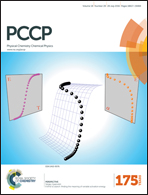Preparation and unique dielectric properties of nanoporous materials with well-controlled closed-nanopores
Abstract
Although general porous materials have a low dielectric constant, their uncontrollable opened porous structure results in high dielectric loss and poor barrier properties, thus limiting their application as interconnect dielectrics. In this study, polymeric nanoporous materials with well-controlled closed pores were prepared by incorporating polystyrene (PS) hollow nanoparticles into polyethylene (PE/HoPS). SEM images suggested a closed porous structure for PE/HoPS. In order to show the effect of the porous structure on dielectric properties, nanoporous materials with an opened or uncontrollable porous structure were prepared by etching SiO2/PE or PE/PS@SiO2 composites. PE/HoPSs composites showed an apparently lower dielectric constant and loss compared with the opened porous PE, demonstrating the advantages of a closed porous structure upon enhancing low-dielectric performance. The low dielectric performance of the PE/HoPS composites is linked with high water resistance owing to their closed porous characteristics. When incorporating 15.3 wt% HoPS (porosity: ∼6.9%), the dielectric constant reached 2.08. This value is lower than that calculated from the serial model. Our work revealed that the incorporation of HoPS not only reduces the porosity, but also alters the intrinsic properties of PE, as a result, leading to a greatly reduced dielectric constant.


 Please wait while we load your content...
Please wait while we load your content...